Lack of timely data is sending seafood companies towards a cliff.
1 min read
Bankruptcy!! The Future for Seafood Companies?
By Chip Terry on Jul 7, 2025 11:44:05 AM
2 min read
The Next Wave: How AI Agents Will Transform Seafood Operations
By Drew Condon on May 23, 2025 8:18:20 AM
If there’s one thing every seafood distributor and processor agrees on, it’s this: time on the floor beats time behind a screen. Yet margins, regulations, and customers all demand more data, faster answers, and fewer mistakes. At BlueTrace, we’ve spent years making traceability and inventory management simpler. Now we’re starting to take the next leap—bringing the power of AI directly into your daily seafood operation workflow.
Below is a look at two AI-powered capabilities we’re thinking about building to help you work smarter, move product faster, and keep your team focused on what matters most.
4 min read
Mastering Inventory: Key to Success in Seafood Distribution
By Chip Terry on May 15, 2025 1:03:55 PM
Mastering Inventory: Key to Success in Seafood Distribution
1 min read
New: Seafood Processing with BlueTrace Inventory Management
By Drew Condon on Mar 25, 2025 12:57:41 PM
We are excited to announce the launch of our latest feature in BlueTrace Inventory Management: Seafood Processing. This addition empowers seafood businesses to manage product transformations with ease and accuracy, ensuring real-time inventory updates and comprehensive traceability throughout the supply chain.
2 min read
Case study: BlueTrace Enhances Seafood Operations with TSC Auto ID
By Chip Terry on Feb 4, 2025 10:42:11 AM
BlueTrace Celebrates TSC: Because Seafood Needs Clear Labels
2 min read
BlueTrace 2024 Year in Review
By Drew Condon on Dec 23, 2024 1:42:11 PM
BlueTrace in 2024
This year, we made waves—and not just because we printed over 8 million seafood and shellfish tags and labels (enough to stretch from Boston to South Carolina and back!). Our growing team of 10 rose to the challenge, rolling out major product enhancements that streamlined workflows, improved accuracy, and brought greater clarity to our customers’ seafood operations. Many steps closer to simplifying the seafood supply chain.
2 min read
How to Choose A Tech Solution for Your Seafood Business
By Chip Terry on Dec 18, 2024 11:10:41 AM
So You Need a Software System for Your Seafood Business...
Let's talk about finding the right system to run your seafood operation. I know it can feel overwhelming - you want something that'll make your life easier, help you grow, and keep you in control. The good news? You've got options. Let me break them down for you.
2 min read
Now is the Time to Look at Seafood Software
By Chip Terry on Nov 27, 2024 10:46:43 AM
Why seafood companies need better tech systems
1 min read
BlueTrace Joins The Global Dialogue On Seafood Traceability (GDST)
By Chip Terry on Sep 27, 2024 9:07:07 AM
Why We Joined the Global Dialogue on Seafood Traceability (GDST)
At BlueTrace, we’re excited to announce that we’ve officially joined the Global Dialogue on Seafood Traceability (GDST). The relevance of GDST has grown significantly in recent years, and we’re happy to embrace its mission of bringing transparency, accountability, and efficiency to the seafood supply chain.
4 min read
Web: Fees and QuickBooks Purchase Orders
By Drew Condon on Sep 19, 2024 12:15:00 AM
We’re excited to announce our latest features: Fees and QuickBooks Purchase Orders (POs) integration. These updates, developed with feedback from customers like Low Country and The Clam Man, are designed to reduce friction in your invoicing and purchasing workflows. Whether you’re managing fees or automating purchase orders in QuickBooks, these new tools will save time and improve accuracy. Here’s what you need to know!
2 min read
BlueTrace Evolves to Simplify Seafood Operations
By Drew Condon on Sep 18, 2024 11:38:02 AM
BlueTrace continues to add more clients and launch innovative solutions for the seafood industry. With over 7.5 million tags/labels printed and over 470 clients, BlueTrace has grown from being a niche solution for shellfish companies to the leading seafood technology company in North America.
3 min read
Web + iOS 7.5.1: Streamlining Sales, Purchasing, and QuickBooks Integration
By Drew Condon on Aug 20, 2024 12:15:00 AM
We’re excited to share a series of important updates from our August 2024 releases, aimed at improving sales order management, purchasing, and enhancing our QuickBooks integration. Whether you’re managing packed lots, purchases, or invoices, these features are designed to save you time and provide better visibility into your operations. Let’s take a look at the highlights!
3 min read
Web & iOS 7.5: Simplifying Purchase Tracking and Sales for Your Business
By Drew Condon on Jul 24, 2024 12:15:00 AM
We are excited to announce the release of Purchases, iOS 7.5, and several additional enhancements. This update is designed to streamline your purchasing processes, improve inventory tracking, and offer greater flexibility for businesses that handle sales and purchases retroactively. Whether you’re managing purchases, sales orders, or inventory expectations, these new features will simplify your operations. Let’s dive into what’s new!
3 min read
Web: Sales Order Feedback - Enhancing Usability and Fixing Bugs
By Drew Condon on Jul 9, 2024 12:15:00 AM
We’re excited to announce our latest update, Sales Order Feedback. This release is all about responding quickly to customer feedback, addressing usability concerns, and fixing key issues to make your sales order process smoother and more reliable. Whether you’re managing sales orders, packing out, or loading up, these updates are designed to make your life easier. Let’s dive into the changes and improvements in this release!
3 min read
Web: Simplifying Your Invoicing Process with the Quickbooks Integration
By Drew Condon on Jun 25, 2024 12:15:00 AM
We’re excited to announce the release of QuickBooks V1 Integration! This powerful feature is designed to save you time and reduce the hassle of double data entry by seamlessly connecting BlueTrace with QuickBooks. Whether you’re using QuickBooks Online or Desktop, this integration ensures that your invoicing process is faster, more accurate, and fully automated. Let’s take a closer look at how this integration can transform your workflow.
3 min read
Web: Load Up – Simplify Your Shipping Process
By Drew Condon on Jun 18, 2024 12:15:00 AM
We’re thrilled to announce the release of Packing Support Pt 2: Load Up. This powerful feature is designed to help businesses streamline their packing and shipping operations by organizing sales order data based on shippers and routes. Whether you’re packing items, picking them from inventory, or loading them for shipping, Load Up ensures you can manage logistics with ease. Let’s take a closer look at how this feature can benefit your business.
3 min read
Web: Pack Out — Streamline Your Packing Process
By Drew Condon on May 31, 2024 12:15:00 AM
We’re excited to announce the release of Packing Support Pt 1: Pack Out. This powerful new feature helps you take control of your packing process by using your sales order data to generate a streamlined packing list based on your specific needs. Whether you need to organize sales orders by items, departments, or shipping routes, Pack Out provides the flexibility to pack more efficiently. Let’s dive into how this feature can help transform your workflow.
2 min read
7.3.0: Seamless Integration with Sales Orders for Optimized Workflows
By Drew Condon on May 6, 2024 12:15:00 AM
We are excited to announce the release of iOS version 7.3, packed with new features designed to streamline your order management and enhance the connection between iOS and web-based sales orders. This update enables greater synchronization between your sales activities and logistics, offering more control and flexibility for your team.
2 min read
Web: Streamlined Sales and Inventory Management
By Drew Condon on Apr 30, 2024 12:15:00 AM
We’re excited to announce a major update with the introduction of Sales Orders, available as of April 30, 2024. This new feature is designed to help businesses manage their sales and inventory processes more effectively, providing a clear view of customer orders, special pricing, and streamlined shipping logistics—all in one place. Let’s take a closer look at how these new tools can transform your business operations.
2 min read
7.2 Streamlined Inventory Management & Enhanced Traceability
By Drew Condon on Apr 10, 2024 12:15:00 AM
We’re excited to unveil version 7.2.0 of BlueTrace, which introduces powerful new tools to improve your seafood inventory management, traceability, and operational efficiency. This update addresses feedback from our pilot and includes features tailored for distributors who handle a variety of products. Let’s dive into the highlights of this release.
2 min read
BlueTrace: Continue Growth and Product Expansion
By Chip Terry on Mar 13, 2024 4:50:06 PM
BlueTrace Grows to 430 clients, prints over 5 million tags, and expands product.
2 min read
US Aquaculture: Opportunity Abounds
By Chip Terry on Feb 28, 2024 8:39:32 PM
This is the first of three related articles exploring the issue of aquaculture in the US. This series was sparked by NOAA seeking comments on the US National Aquaculture Development Plan. The goal of the plan is to: strengthening U.S. commitment to food security, climate resilience, and the protection of threatened and endangered species.
The last plan was done 40 years ago!
3 min read
7.1.0: Smoother, More Efficient Inventory Control
By Drew Condon on Feb 28, 2024 12:15:00 AM
We’re excited to announce the release of version 7.1.0 of BlueTrace. This update is packed with improvements designed to make inventory management even more seamless, based on the valuable feedback we received during our initial pilot phase. Here’s a look at what’s new, what’s been fixed, and how this update will make your seafood inventory workflow more efficient.
3 min read
The Crimes Behind the Seafood You Eat
By Chip Terry on Oct 19, 2023 1:04:44 PM
The article from the New Yorker is devastating: A huge Chinese fleet, manned with at least some slave labor destroying the global squid fisheries to put calamari on the plate of US consumers.
2 min read
BlueTrace's Durable, Mobile Tagging Solution
By Cat Ganim on Sep 19, 2023 8:57:47 AM
Our primary goal at BlueTrace is to streamline operations for our customers and save them valuable time. A significant aspect of achieving this goal is minimizing the time required to create tags and attach them to shellfish containers.
The journey of finding a reliable and durable paper product for our mobile printers has been an ongoing endeavor. However, the main challenge we encountered was the lengthy process of sourcing the perfect paper stock, obtaining samples, and conducting thorough testing.
But here's the exciting part: After collaborating with three vendors and meticulously testing five different paper stocks and perforation patterns, we have finally discovered a thicker paper stock that surpasses expectations in terms of durability and ruggedness for shellfish tags and labels. Now, let me delve into the process we underwent and the ultimate decisions we made...
2 min read
Greenwashing and Shellfish Tags
By Chip Terry on Sep 11, 2023 2:07:00 PM
We have seen a few tag materials that claim to be compostable and recyclable. If true, this would be a boon to the seafood industry and we would be first in line to embrace it. But the reality is the commercial applications don’t live up to the hype.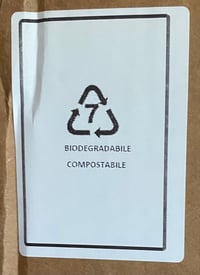
1 min read
Recalls don't have to be scary
By Chip Terry on Sep 5, 2023 12:02:29 PM
Recalls happen--fortunately not very frequently--but they are a fact of life in any food industry. Most recalls are precautionary. In other words, there are no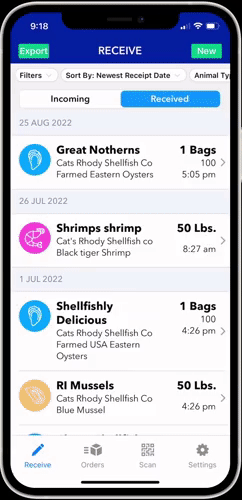 confirmed illnesses.
confirmed illnesses.
1 min read
Virginia Oyster Recall
By Chip Terry on Aug 11, 2023 12:23:15 PM
Below are the details of a recall published on August 11, 2023--for oyster harvested in June 2023!! I sure hope these are not still in circulation. We checked with our clients and they are all clear. Hopefully no one got sick, but it clearly cost the folks involved a ton of time and hurt their reputation.
The regulators are doing their job and making sure we all stay safe--and our industry stays healthy. Let's all help make their jobs easy.
3 min read
Seed Funding Announcement
By Alessandra Bosco on Feb 16, 2023 9:00:00 AM
FOR IMMEDIATE RELEASE
2 min read
What If? Digital Receiving and Labeling
By Chip Terry on Feb 14, 2023 10:46:50 AM
The receiving dock at seafood companies can be chaos. 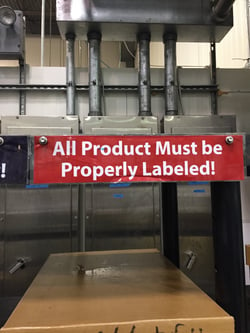
We recently watched a harried guy with a clipboard direct six forklifts unloading 14 tractor trailers' worth of seafood one morning. Salmon from Norway, squid from California, tuna from Costa Rica, lobster from Maine, mussels from Canada, oysters from the Chesapeake. The list went on and on.
2 min read
FDA Final Rule for Food Traceability
By Chip Terry on Nov 15, 2022 4:19:12 PM
The FDA today announced the final rule for Food Traceability that was required by the Food Safety Modernization Act law. We will explore this is future blog posts, but let's start with the high level:
BlueTrace: How Did We Get Here?
By Chip Terry on Oct 17, 2022 1:16:06 PM
Many thanks to the Gulf of Maine Research Institute for putting together an amazing 4 minute video introducing BlueTrace. Enjoy.
1 min read
Inventory Labels?
By Chip Terry on Sep 12, 2022 10:13:41 AM
Our latest release introduced inventory labels. Why?
3 min read
Greenhouse Gas Emissions & Seafood
By Chip Terry on Jun 15, 2022 7:51:43 PM
2 min read
Streamlining the Receiving Dock
By Chip Terry on Jun 6, 2022 10:55:00 AM
Receiving docks are chaotic—and incredibly important. Receiving is a regulated "Critical Tracking Event" in which the buyer is supposed to transcribe the "Key Data Elements" and ensure that the product is what they ordered and that the cold chain has been maintained. Having observed many receiving docks, we understand that the time wasted, the errors introduced, and the money lost can be significant.
There are obvious ways to improve this process, some of which the best companies have implemented. In particular, they get information about a shipment before it arrives and have the product properly labeled with a link to the digital record so receiving involves only scanning—not trying to read someone's handwriting.
Historically, this sort of tool has been available only to the largest companies. But BlueTrace has developed a system accessible to the vast majority of the market.
1 min read
Temperature Tracking & Vibrio Risk Management with BlueTrace
By Call Nichols on Jun 3, 2022 10:40:47 AM
In many shellfish-producing states, May 1 marks the beginning of Vibrio season. For those who don’t know, Vibrio is the most common food-borne illness caused by raw oyster (and other foods). The key management strategy: Keep it cold.
2 min read
Best Practices for Protecting North American Oysters from OsHV-1
By Call Nichols on May 10, 2022 6:56:01 PM
With the resumption of shellfish trade with the EU, the U.S. oyster industry is rightfully concerned about the introduction of OsHV-1 into our waters. Although this virus does not affect humans, it has been linked to mass oyster mortalities all across the world. Not every imported oyster is carrying the virus, but they all must be treated as such since we can’t know which ones are carriers, and the stakes are just too high.
2 min read
Anatomy of an Oyster Recall
By Chip Terry on Apr 11, 2022 3:51:20 PM
Oysters are a safe food, and very few people get sick from eating them. When something bad does happen, though, news stories get out of control, and the whole industry is harmed. A recent oyster recall in British Columbia illustrates the challenges. Here is what we know so far (this is an ongoing story, so more details will likely emerge):
6 min read
Countering NIMBYism with Chris Matteo of Chadwick Creek Oysters
By Chip Terry on Mar 8, 2022 2:31:30 PM
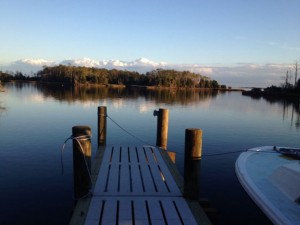
Below is a letter to the editor of Carteret County News-Times in North Carolina from Chris Matteo of Chadwick Creek Oysters. Chris is writing in response to a classic NIMBY article. A retired judge moved to town and wanted to "protect" his view by telling the locals what they could do. Chris' response is thoughtful and deserves a wide audience. Thank you Chris.
2 min read
BC Shellfish Growers Choose BlueTrace
By Chip Terry on Jan 13, 2022 1:40:19 PM
 Comox, British Columbia. The British Columbia ShellfishGrowers Association has partnered with BlueTrace to bring industry-leading traceability technology to BC shellfish businesses.
Comox, British Columbia. The British Columbia ShellfishGrowers Association has partnered with BlueTrace to bring industry-leading traceability technology to BC shellfish businesses.
2 min read
Free Money: USDA PRS grant
By Chip Terry on Nov 16, 2021 9:31:51 AM
Many of us might wonder whether the govt has gone overboard with funding, but if they are offering and you are eligible you should at least consider applying.
1 min read
Shellfish Tags: What? Why? and How?
By Chip Terry on Nov 8, 2021 1:34:11 PM
Shellfish tags are mandated by the FDA and are part of the model ordinance from the National Shellfish Sanitation Program. They play a very direct role in public health protection.
Podcast: With Aquademia
By Chip Terry on Oct 29, 2021 11:43:25 AM
The Global Seafood Alliance (formerly the Global Aquaculture Alliance) publishes one of the best seafood podcasts. The team of Shaun O’Loughlin, Justin Grant, and Maddie Cassidy are awesome. We were lucky enough to be interviewed recently. Always fun to talk seafood and innovation with smart and knowledgeable folks. You can listen on your favorite podcast app or download from their website.
4 min read
FSMA New Rules: What will change for the Seafood Industry?
By Chip Terry on Oct 1, 2021 12:00:00 PM
The New Era of Smarter Food Safety represents a new approach to food safety, leveraging technology and other tools to create a safer and more digital, traceable food system.
2 min read
Prop 65: This Matters for Everyone
By Chip Terry on Sep 19, 2021 9:30:00 AM
Save yourself from a frivolous lawsuit and include the Prop 65 language on your shellfish tags.
2 min read
NOAA Grant: We Won!!
By Chip Terry on Aug 31, 2021 12:14:52 PM
Thanks to all the folks at the National Oceanic and Atmospheric Administration (NOAA) we are hiring more folks and scaling our solution. Stay tuned for more product update. 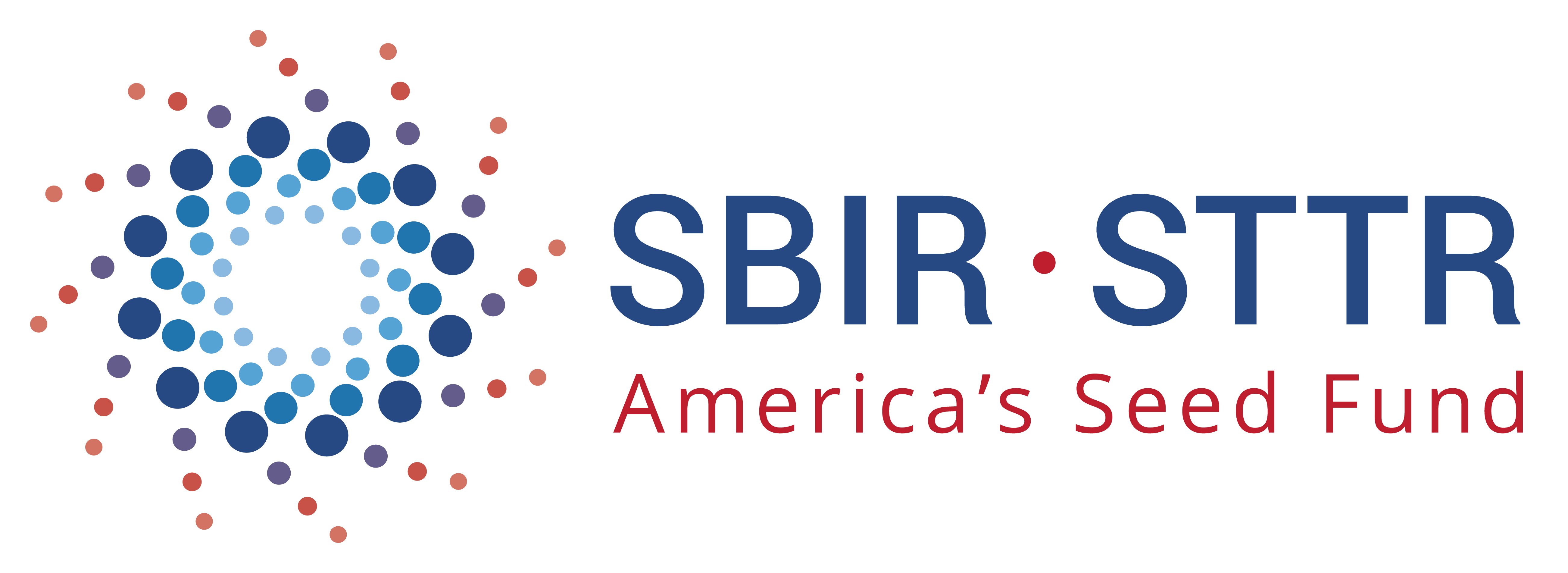
Here is the official press release:
2 min read
Vibrio and Food Safety
By Chip Terry on Aug 24, 2021 1:43:50 PM
The success of our businesses rely on consumers staying healthy.
2 min read
Meet Kam: Farmer and Fisherman
By Chip Terry on Jun 14, 2021 8:06:10 AM
Although BlueTrace software is great, the key to success is having folks like Kam Kim of Newport News, VA on the team.
4 min read
Meet a Distributor: War Shore
By Chip Terry on Jun 1, 2021 10:36:40 AM
 Brad Blymier started as a small pedestrian farmer on the eastern shore of Virginia over 12 years ago. Very quickly he realized his natural gift for connecting with chefs and farmers and started helping neighboring farms sell their product. Within a couple of years, he decided to focus solely on the distribution side of the business. Since then, War Shore has grown into one of the largest specialty shellfish distributors in the “DMV” (DC/MD/noVA). Today they deliver oysters, lobster meat, scallops, clams, mussels and other specialty creatures of the sea to a growing array of chefs and major supermarkets. With their new Maine buying station (Maine Oyster Initiative) they are one track to buy over 1.5 million Maine oysters this year which is about 15% of their overall oyster sales.
Brad Blymier started as a small pedestrian farmer on the eastern shore of Virginia over 12 years ago. Very quickly he realized his natural gift for connecting with chefs and farmers and started helping neighboring farms sell their product. Within a couple of years, he decided to focus solely on the distribution side of the business. Since then, War Shore has grown into one of the largest specialty shellfish distributors in the “DMV” (DC/MD/noVA). Today they deliver oysters, lobster meat, scallops, clams, mussels and other specialty creatures of the sea to a growing array of chefs and major supermarkets. With their new Maine buying station (Maine Oyster Initiative) they are one track to buy over 1.5 million Maine oysters this year which is about 15% of their overall oyster sales.
2 min read
Insurance: Recordkeeping Matters
By Chip Terry on May 20, 2021 7:10:10 AM
Below is a nice description of the new ELAP insurance program from the East Coast Shellfish Growers Association. Farmers will be wise to heed their advice and keep good records.
2 min read
Oyster Tracker is now BlueTrace
By Cat Ganim on May 17, 2021 6:26:21 PM
 Four years ago, we had the idea of helping oyster farmers improve their operations. Today, we have over 120 clients in 12 states and 4 countries. We have employees, investors and even won a major grant from NOAA. All this would not be possible without the support of so many. Thank you!
Four years ago, we had the idea of helping oyster farmers improve their operations. Today, we have over 120 clients in 12 states and 4 countries. We have employees, investors and even won a major grant from NOAA. All this would not be possible without the support of so many. Thank you!
1 min read
Printers & Supply Chains
By Chip Terry on May 5, 2021 9:09:47 AM
Supply Chains are the lifeblood of our economy. From how a shellfish gets from the tideline to the table, to how a semi-conductor chip gets from a factory in Asia to a printer on a farm.
2 min read
Tag Printing 101—Say Goodbye to Preprinted Tags
By Chip Terry on Apr 19, 2021 8:47:00 AM
Forget Pre-Printed Tags: How Oyster Tracker Can Help Your Shellfish Farm Transition Into The 21st Century
1 min read
Cape Cod Farmers and Wholesalers
By Chip Terry on Apr 16, 2021 8:40:32 AM
One of the great joys of this job is visiting our clients. Last week I visited a bunch on Cape Cod and got a couple of fun videos.
1 min read
Tell Your Story
By Chip Terry on Feb 2, 2021 10:01:11 AM
We continue to hear amazing stories from farmers.
Virtual Tradeshow
By Chip Terry on Jan 15, 2021 4:54:18 PM
We did a virtual tradeshow with the East Coast Shellfish Growers Association. Over 90 people showed up!!
1 min read
Good News from our Clients
By Chip Terry on Jan 13, 2021 1:02:14 PM
The Aquaculture North America just published it's latest magazine, and our clients are in two separate articles:
3 min read
Working with Distributors
By Chip Terry on Sep 25, 2020 3:06:40 PM
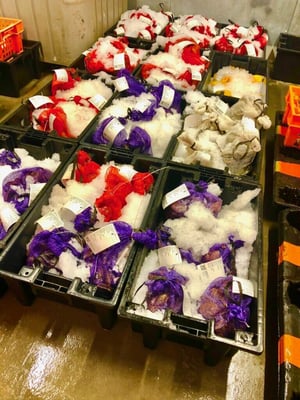 Almost every farm starts out selling to local restaurants, but as they scale distributors (aka wholesalers) play an increasingly important role. You will make more money per shell at a restaurant, but there is a limit to how much restaurants can buy. If you are producing more than a few local restaurants and some consumers can absorb, you are probably going to need to work with distributors. We've been talking to a lot of distributors lately and here are some of the things farmers should know.
Almost every farm starts out selling to local restaurants, but as they scale distributors (aka wholesalers) play an increasingly important role. You will make more money per shell at a restaurant, but there is a limit to how much restaurants can buy. If you are producing more than a few local restaurants and some consumers can absorb, you are probably going to need to work with distributors. We've been talking to a lot of distributors lately and here are some of the things farmers should know.
2 min read
Shellfish Tagging: It Works
By Chip Terry on Sep 9, 2020 2:19:44 PM
We started thinking about shellfish tagging about a year ago. We were watching
1 min read
NOAA Grant: Tide to Table Traceability and Marketing System
By Chip Terry on Jul 9, 2020 10:38:17 AM
We won (a grant)! In a stroke of great luck and a testament to the awesome team at Oyster Tracker, we have been awarded a grant from National Oceanographic and Atmospheric Administration (NOAA).
1 min read
Don't Share your Data with a Competitor
By Chip Terry on May 14, 2020 1:05:33 PM
When you work with us, your data is your data and we don't share it with anyone. You can read our privacy policy and terms of service on the bottom of this website.
1 min read
Zooming and Filtering: The Latest on Oyster Tracker
By Cat Ganim on Apr 9, 2020 1:07:12 PM
|
Despite all the craziness, our team has been focused on what we can control: improving our Farm Management software.
We released our latest version last week. This release is all about helping folks navigate more easily through the farm. For example, we now include a global view of your farm with counts of all animals.
.png?width=2048&name=Image%20from%20iOS%20(25).png) You can also now filter your results to find just the size, year class, equipment, or virtually any other data point that you are looking for.
|
 |
|
Finally, during this Covid outbreak we are not charging any of our clients for two months and we are offering 2 month free trials to anyone who wants one. Please tell your friends. :-) Thanks for all your support. Cat Ganim |
1 min read
Welcome Kam
By Chip Terry on Apr 7, 2020 1:18:43 PM
After getting inquiries from over 30 people and interviewing 8 amazing folks, we hired our first sales leader--right as Covid shutdown the entire economy.
1 min read
Covid Crisis: Preparing for a better future
By Chip Terry on Mar 24, 2020 1:50:19 PM
Wow it is a crazy time. I hope you and your families are well. That is most important.
2 min read
1 min read
USDA Aquaculture Data: Tread Carefully
By Chip Terry on Jan 8, 2020 12:48:58 PM
The USDA just released a census of Aquaculture in the US. As far as I can see, the data has some serious limitations--and it is not the fault of the USDA. It was a voluntary survey and the results show that the majority of farms didn't return the surveys. Here are a couple of highlights:
2 min read
Oysters: Headed to Tulip Territory?
By Chip Terry on Dec 13, 2019 3:10:59 PM
In 17th century Holland Tulips were the first modern market panic. Overnight tulip values dropped to almost nothing and scores of people went bankrupt. The question I get regularly is: Are we in a oyster bubble? 
4 min read
Environmental Services: A New Revenue Opportunity for Oyster Farms
By Chip Terry on Oct 29, 2019 3:00:23 PM

Our waterways are stressed by excess nutrients--especially nitrogen and phosphate. Nitrogen and phosphate fertilizer fueled the "green revolution" that saw grain harvest double within 20 years. This amazing revolution has fed millions and delivered beautiful green lawns to many.
1 min read
PCSGA: Understanding the West Coast Industry
By Chip Terry on Sep 30, 2019 9:57:00 AM
Just spent a week out in Portland OR at the 73rd! Pacific Coast Shellfish Growers Association. Really interesting. Here are some of my takeaways.
2 min read
Long Island: Amazing
By Chip Terry on Sep 27, 2019 9:00:30 AM
Spent 4 days earlier this month visiting clients and prospects on Long Island. Clearly this is a region on the rise. The fresh water of the Atlantic flushes the Little and Great Peconic .jpg?width=300&name=IMG_2972%20(1).jpg) Bays creating ideal growing conditions. The communities are largely supportive. The farms can sell to great restaurants on Long Island or within a few hours they can have their product in NYC. No wonder the number of farmers and the size of the farms is growing.
Bays creating ideal growing conditions. The communities are largely supportive. The farms can sell to great restaurants on Long Island or within a few hours they can have their product in NYC. No wonder the number of farmers and the size of the farms is growing.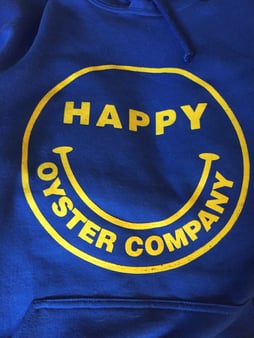
1 min read
Oyster Tracker Grows Up
By Chip Terry on Sep 20, 2019 1:03:27 PM
Oyster Tracker recently hit two big milestones--we raised money and hired our first Chief Technical Officer full time. Having clients in 10 different states and 3 countries has taught us a lot. We now know a lot more about what the industry needs, what we should build and how we should support you. With talent and money, we can bring our solution to the next level.
2 min read
Oyster Tracker releases new version and grows customer base
By Chip Terry on Aug 27, 2019 6:06:00 PM
Excuse the brag, but every once is a while we like to take note of what we have accomplished. Here is our latest press release.
3 min read
Insurance, Really?
By Chip Terry on Jul 27, 2019 6:07:00 PM
This is the most boring post ever, but potentially the most important. Imagine this scenario:
Scallops Do Have Eyes
By Chip Terry on May 14, 2019 6:07:00 PM
OK. So I published fake news. In our last newsletter, I used a reddit post:
